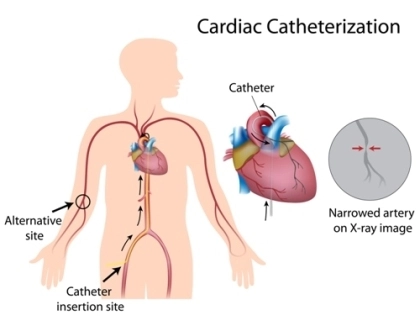5 FAQs Help Solve Your Most Pressing CPT® 2022 Cardiology Coding Puzzles
CPT® 2022 will delete codes 93530-93533. With January 1 comes a variety of CPT® 2022-related headaches you’ll have to deal with, including navigating the new left atrial appendage (LAA) exclusion codes and mastering your new congenital heart defects cath options. Take a look at the following frequently asked questions about the CPT® 2022 codes, so you can face all these updates with complete confidence. Discover New LAA Codes and Guidelines Question 1: What new LAA exclusion codes will we gain in 2022? Answer 1: The new LAA exclusion codes you will receive in 2022 are as follows: Codes 33267-33269 describe surgical LAA exclusion, which your cardiologist can perform by methods such as excision, isolation via stapling, oversewing, ligation, plication, or clip, per the CPT® 2022 guidelines. Your cardiologist will perform LAA to treat atrial fibrillation and alleviate postoperative thromboembolic complications. Your cardiologist can also perform LAA exclusion as a stand-alone procedure via a sternotomy, thoracotomy, or thoracoscopic approach. However, your cardiologist will most commonly perform LAA exclusion along with other procedures, requiring a sternotomy or thoracotomy approach. Code 33267: You can only report code 33267 when your cardiologist has not performed a concurrently performed procedure that requires a sternotomy or thoracotomy approach. You should not report code 33267 in conjunction with other sternotomy or thoracotomy procedures your cardiologist performed during the same session. Code +33268: If your cardiologist performs a +33268 procedure concurrently, you may report this code with a primary procedure performed via a sternotomy or thoracotomy. Code 33269: You can report code 33269, “for thoracoscopic LAA exclusion, other than with maze or mitral valve procedures (33254-+33259, 33265 and 33266, 33240, 33422, 33425-33427, and 33430) when preformed during the same operative session,” per the CPT® guidelines. Caution: You should never report codes 33267-33269 in conjunction with codes 33254-+33259, 33265, 33266, 33420, 33422, 33425-33427, and 33430. Puzzle Out Coarctation of Aorta Repair Choices Question 2: When should we report new codes 33894 (Endovascular stent repair of coarctation of the ascending, transverse, or descending thoracic or abdominal aorta, involving stent placement; across major side branches) and 33895 (… not crossing major side branches)? What are the differences between these two codes? Answer 2: You should report codes 33894 and 33895 when your cardiologist uses stent placement to treat the patient’s coarctation, a birth defect where part of the patient’s aorta is narrower than normal, according to the CPT® guidelines. Code 33894 versus 33895: When it comes to the main difference between codes 33894 and 33895, your cardiologist will place the stent across one or more major side branches of the aorta in a 33894 procedure, but not with a 33895 procedure. Don’t miss: Codes 33894-33897 (Percutaneous transluminal angioplasty of native or recurrent coarctation of the aorta) include many services so you cannot report these separately, per the CPT® guidelines. Some of these included services are: Wade Through Brand-New Congenital Heart Defects Cath Codes Question 3: Looking through the 2022 codes, it looks as though CPT® has deleted some congenital heart cath options. Did we get any codes to replace the deleted ones? Answer 3: CPT® 2022 will delete congenital heart cath codes 93530 (Right heart catheterization, for congenital cardiac anomalies)-93533 (Combined right heart catheterization and transseptal left heart catheterization through existing septal opening, with or without retrograde left heart catheterization, for congenital cardiac anomalies). In the place of the deleted codes, CPT® will offer the following new congenital heart cath codes: Don’t Miss New Endoscopic Harvesting Code Question 4: I see that CPT® added new code 33509 (Harvest of upper extremity artery, 1 segment, for coronary artery bypass procedure, endoscopic) for 2022. Can you tell me more about this code? Answer 4: You should report 33509 for endoscopic harvesting of an upper extremity artery for a bypass procedure, per the CPT® guidelines. Don’t miss: If your cardiologist performs a bilateral procedure, you should append modifier 50 (Bilateral procedure) to 33509. Mark Down Included Services for +33370 Question 5: I saw that a new code was added to the “Cardiac Valves/Aortic Valves” section of the CPT® manual. Could you tell me more about this code? Answer 5: You are talking about code +33370 (Transcatheter placement and subsequent removal of cerebral embolic protection device(s), including arterial access, catheterization, imaging, and radiological supervision and interpretation, percutaneous (List separately in addition to code for primary procedure). You should report +33370 for cerebral embolic protection in conjunction with transcatheter aortic valve replacement (TAVR/ TAVI) codes 33361-33366, per the CPT® guidelines. Code +33370: Code +33370 includes some procedures, so you should not report these separately. For example, the percutaneous arterial access, placement of a guiding cath, and the delivery of the embolic protection filters prior to the procedure are all included. If your cardiologist places additional or multiple filters, they cannot separately report this, per the guidelines. Code +33370 also includes “removal of the filter(s) and debris, removal of the arterial sheath, and closure of the arteriotomy by pressure and application of an arterial closure device or standard closure of the puncture by suture,” per the guidelines. “Extensive repair or replacement of an artery may be additionally reported.” Finally, code +33370 includes all of the imaging guidance and radiological supervision and interpretation associated with performing cerebral embolic protection, such as 75600 (Aortography, thoracic, without serialography, radiological supervision and interpretation), 75710 (Angiography, extremity, unilateral, radiological supervision and interpretation), and +76937 (Ultrasound guidance for vascular access requiring ultrasound evaluation of potential access sites, documentation of selected vessel patency, concurrent realtime ultrasound visualization of vascular needle entry, with permanent recording and reporting (List separately in addition to code for primary procedure)).





